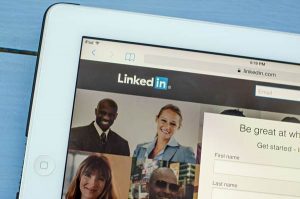
Many construction contractors struggle with their social media and understanding which platforms are best, not to mention strategies on content. In a recent ABC of Wisconsin Marketing & Business Development presentation, Laura Monagle and Michael Bonin of Affirm joined Michele Loppnow from ESI group USA to provide some insight. Here are 10 of their top takeaways:
1. LinkedIn is one of — if not the strongest — social media opportunities for you. If you don’t know how to get into the social media game and you’re not sure where to start, try LinkedIn. It’s a little bit intimidating, trying to juggle three platforms at once, so start slow. LinkedIn is probably the best option, especially if you are more B2B focused.
“For us, we’re not selling HVAC systems, we’re not selling roofs. Our sales cycle can be 12 to 18 months,” said Loppnow. “ I post for ESI because of brand awareness. And that’s just really what drives our strategy. So, I don’t feel like I have to post every day. I don’t feel like I have to post on the same platforms.”
2. Use YouTube. It’s the most widely used social media platform, in terms of users and views, but it’s not as intense as any of the other social media pages are in terms of setup and maintenance. If you want to share a video on LinkedIn, you’ll want it to live on your YouTube page where your video can be found. You can also easily share it from there.
3. Keep more local things to Facebook and more business information on LinkedIn and Twitter. You can probably reach more people on Facebook, that’s not always good, since you’re reaching Joe Smith, who has no interest in your company and would never be a target audience member. It’s good to get Joe interacting with your posts, but at the end of the day, it’s likely never going to translate to a sale, whereas LinkedIn, it could. The people you are targeting and who are following you are in your construction industry and likely have a need for your service.
4. Think about social media, not as an instant end goal, but you have a little bit longer of a sales process, you’re going to want to build those relationships; build trust.
 5. Think about the customers’ perspective; what’s going to be of interest to them? What do they need to learn about you rather than what do you want to push out? They want to see industry information and things that are useful to them or their business. They’re looking for ideas, new trends, things like that, that offer them value. You don’t want to see 3, 4, 5, 6, 7, Facebook posts that do nothing but sell. You don’t want to be that person online. You don’t want to be that company online. The people who are on there and are using LinkedIn are there for professional reasons, not socializing like they do on Facebook or Instagram. Followers are not expecting to see pictures of personal trips or your dinner.
5. Think about the customers’ perspective; what’s going to be of interest to them? What do they need to learn about you rather than what do you want to push out? They want to see industry information and things that are useful to them or their business. They’re looking for ideas, new trends, things like that, that offer them value. You don’t want to see 3, 4, 5, 6, 7, Facebook posts that do nothing but sell. You don’t want to be that person online. You don’t want to be that company online. The people who are on there and are using LinkedIn are there for professional reasons, not socializing like they do on Facebook or Instagram. Followers are not expecting to see pictures of personal trips or your dinner.
“If you’re putting out consistently good and engaging content and information, you’re that much more likely to reach a potential user who is in your target audience that you hadn’t specifically targeted yet or who might not follow you,” said Bonin. “You love the people who follow you.”
6. You don’t have to worry about posting every single day. However, when you do post on LinkedIn, it should be something of value to the people who follow you or the people that see you; maybe a trend in our industry or maybe a new safety requirement.
7. Use a spreadsheet for scheduling posts to reduce the pressure of social media. You can plot out frequency and choose the right kind of content with images, etc..
8. Know your goals up front. When you know what your goals are up front for your social media presence and what you’re trying to get out of it, that’s what you want to measure on the backend. If you are trying to reach a certain target audience with your messaging, that’s who you want to measure on the back end.
9. Use analytics, especially for LinkedIn. LinkedIn has a new feature called “content suggestions,” where it will search different topics and make suggestions for your posts. It doesn’t have to be content that you generated. This could be helpful to someone just starting social media for a contractor. If your sales team or if your leadership wants to know how things are going or who your followers are, you can also check that under analytics.
10. Consider doing an audit; hiring someone to do an audit for you could be very valuable in determining your needs and developing a plan.
These are good tips today, but social media is always changing, according to Monagle. “And you know, if we get together again, a year from now, we might have a whole different recommendation. That’s the nature of all of this universe is that it’s ever changing, ever evolving.”
ABC members can listen to the full presentation and read the entire summary here.
By Kyle Schwarm






 5. Think about the customers’ perspective; what’s going to be of interest to them? What do they need to learn about you rather than what do you want to push out? They want to see industry information and things that are useful to them or their business. They’re looking for ideas, new trends, things like that, that offer them value. You don’t want to see 3, 4, 5, 6, 7, Facebook posts that do nothing but sell. You don’t want to be that person online. You don’t want to be that company online. The people who are on there and are using LinkedIn are there for professional reasons, not socializing like they do on Facebook or Instagram. Followers are not expecting to see pictures of personal trips or your dinner.
5. Think about the customers’ perspective; what’s going to be of interest to them? What do they need to learn about you rather than what do you want to push out? They want to see industry information and things that are useful to them or their business. They’re looking for ideas, new trends, things like that, that offer them value. You don’t want to see 3, 4, 5, 6, 7, Facebook posts that do nothing but sell. You don’t want to be that person online. You don’t want to be that company online. The people who are on there and are using LinkedIn are there for professional reasons, not socializing like they do on Facebook or Instagram. Followers are not expecting to see pictures of personal trips or your dinner.




